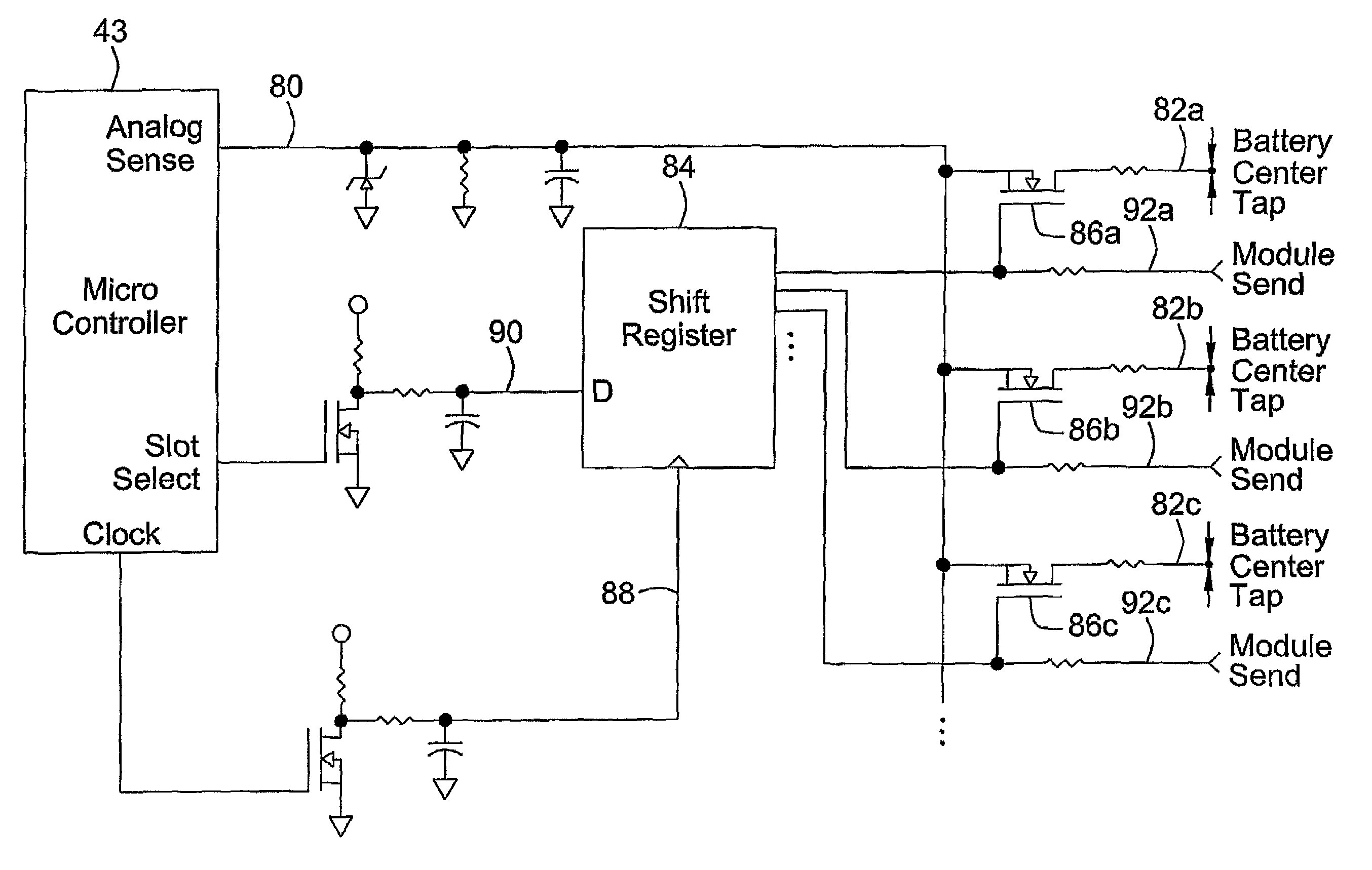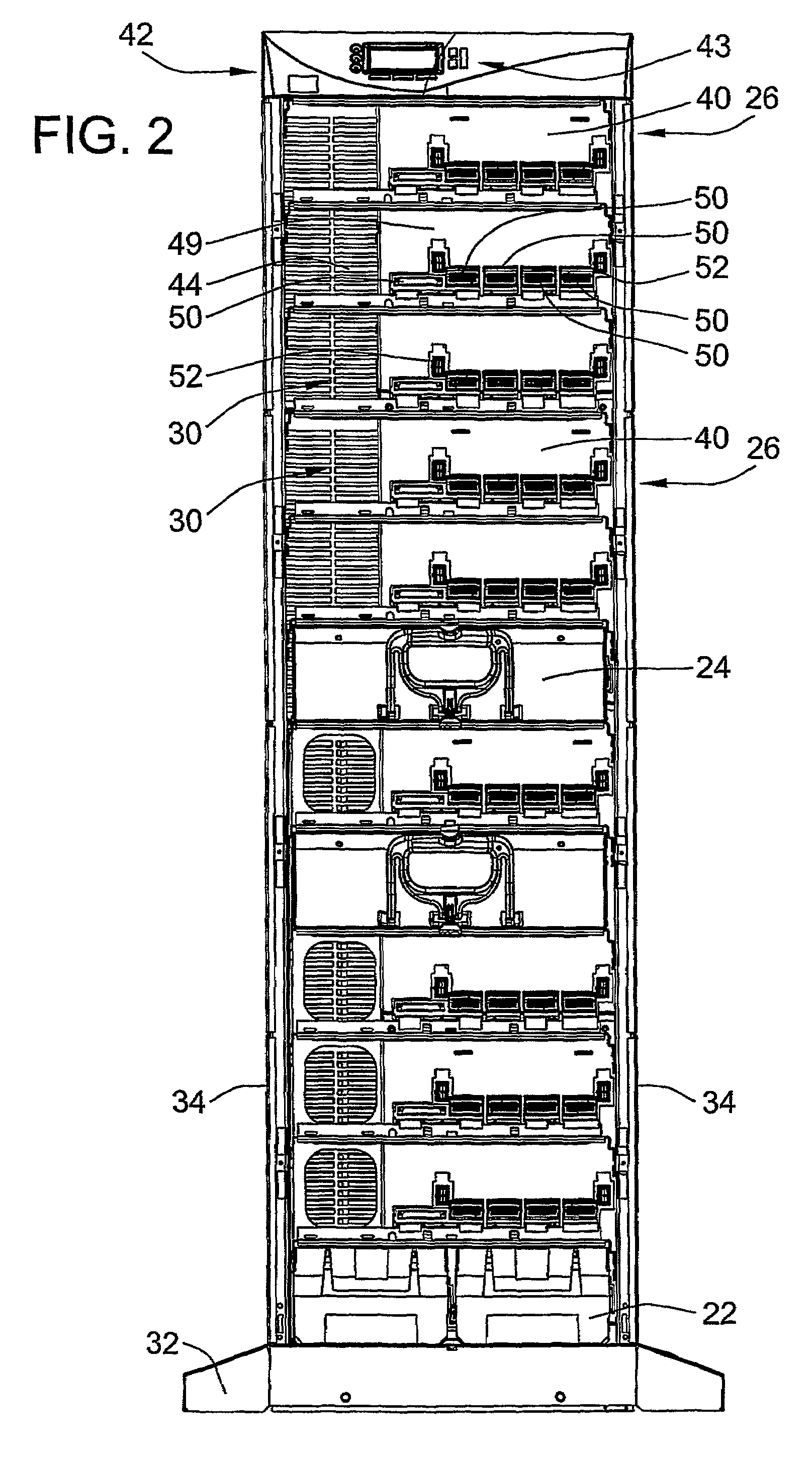System for detecting defective battery packs
a battery pack and detection system technology, applied in secondary cell servicing/maintenance, safety/protection circuits, instruments, etc., can solve the problems of inability to meet the demands of growing economic demands, the availability and reliability of high-quality electric power, and the amount of reliance on electonic equipment used will only increase,
- Summary
- Abstract
- Description
- Claims
- Application Information
AI Technical Summary
Benefits of technology
Problems solved by technology
Method used
Image
Examples
Embodiment Construction
[0051]For purposes of illustration, an embodiment of the present invention is depicted in FIGS. 1 and 2 as a modular chassis or electrical cabinet 20 for supporting and organizing battery packs 22 and power modules 24 into an uninterruptible power supply system (UPS) for such exemplary applications as providing power to computer networks, telecommunications equipment and any other application where an uninterrupted power source is desired. The cabinet 20 is also capable of holding battery chargers 23 if desired, which are contained in the same type of drawer support structure or module housing 25 as the power modules 24 and plug into the back panel in a similar manner. The module housing 25 slides horizontally and locks into the inserted position. Further details of the module housing 25 and associated locking handle structure are described in U.S. patent application Ser. No. 09 / 538,056 entitled, “MULTI-FUNCTION HANDLE AND MODULAR CHASSIS INCORPORATING SAME”, assigned to the present...
PUM
| Property | Measurement | Unit |
|---|---|---|
| voltage | aaaaa | aaaaa |
| voltage | aaaaa | aaaaa |
| voltage | aaaaa | aaaaa |
Abstract
Description
Claims
Application Information
 Login to View More
Login to View More - R&D
- Intellectual Property
- Life Sciences
- Materials
- Tech Scout
- Unparalleled Data Quality
- Higher Quality Content
- 60% Fewer Hallucinations
Browse by: Latest US Patents, China's latest patents, Technical Efficacy Thesaurus, Application Domain, Technology Topic, Popular Technical Reports.
© 2025 PatSnap. All rights reserved.Legal|Privacy policy|Modern Slavery Act Transparency Statement|Sitemap|About US| Contact US: help@patsnap.com



